Minister of Tourism and Antiquities Khaled el-Anani inspected the National Museum of Egyptian Civilization in Fustat on Saturday, following a meeting held with the museum’s board of directors to welcome the head of the museum.
The minister was accompanied during the tour by CEO of the museum Ahmed Ghoneim, Secretary General of the Supreme Council of Antiquities Mostafa Waziri, Head of the Museum’s Sector Moemen Othman, Adviser to the Minister for museum display Mahmoud Mabrouk, Assistant Minister for Engineering Affairs Hisham Samir and the museum’s Display Scenario Committee members.
The tour came to witness the final stages of work in the central exhibition hall and its display scenario Mummies Exhibition Hall's show cases and lighting systems.
Anani made some adjustments to the display scenario and show cases in the hall, to enrich the hall with more artifacts from the Islamic and Coptic civilizations.
Moemen Othman, head of the Museums Sector and a member of the museum’s Exhibiting Scenario Committee, highlighted the ongoing preparations ahead of the arrival of the royal mummies to the museum. The mummies will be transported from the Egyptian Museum in Tahrir soon in a majestic procession.
Statue of Amenemhat III in the NMEC in Fustat on Aug. 8, 2020 - Egyptian Min. of Tourism & Antiquities
Furthermore, Mahmoud Mabrouk, advisor to the minister for the museum display scenario, stated that the most important artifacts exhibited in the museum include the breastfeeding statue and the birth plate from the New Kingdom era, statues of the King Amenemhat III in the form of the Sphinx and Thutmose III sitting, a statue of the deity Nilus from the Greco-Roman period, about fifty niches from the Islamic era, as well as a variety of small statues and amulets made of blue vines and a statue of the ancient Egyptian writer made of red granite with writing tools, inks and brushes.
During inspection tour in NMEC in Fustat on Aug. 8, 2020 - Egyptian Min. of Tourism & Antiquities
The National Museum of Egyptian Civilization is considered one of the most important projects that have been carried out in cooperation with UNESCO, to become one of the largest museums in Egypt and the Middle East to present a new vision of the ancient Egyptian heritage.
The museum showcases the richness of the Egyptian civilization from prehistoric times to the present day through exhibiting diverse archaeological and heritage treasures.
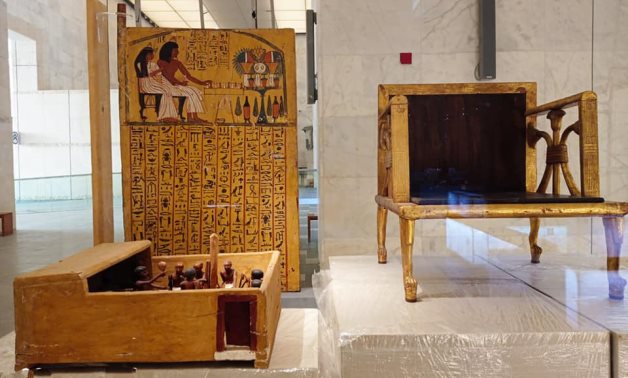
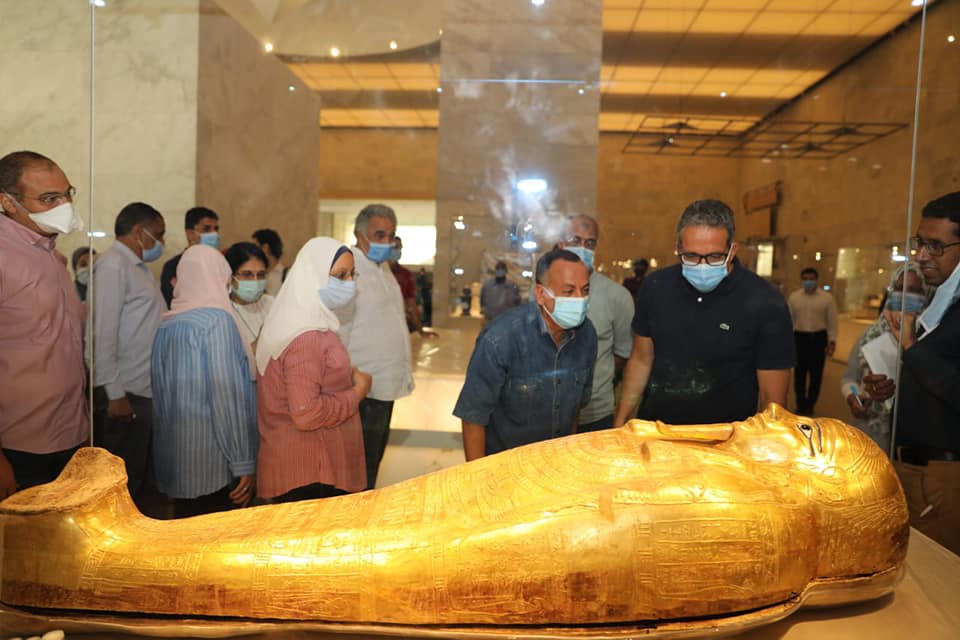
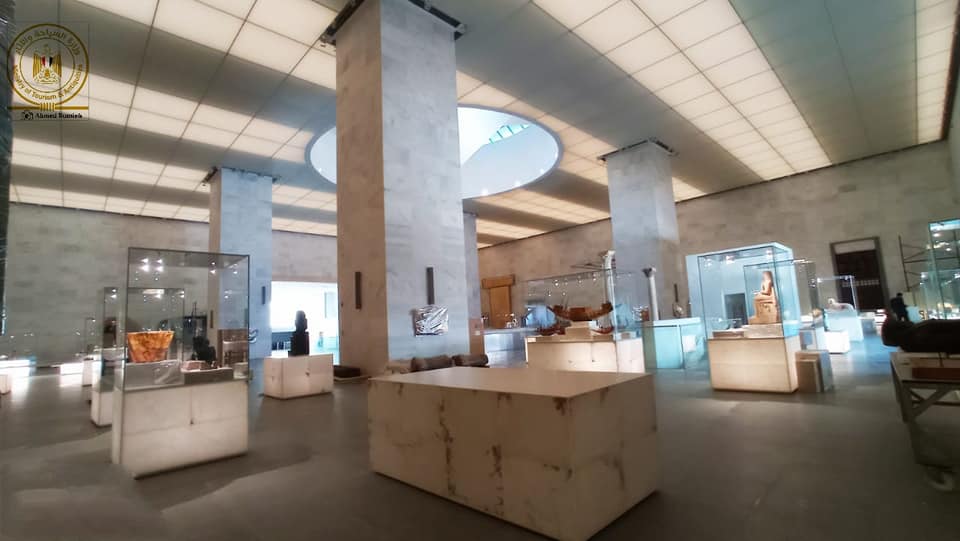
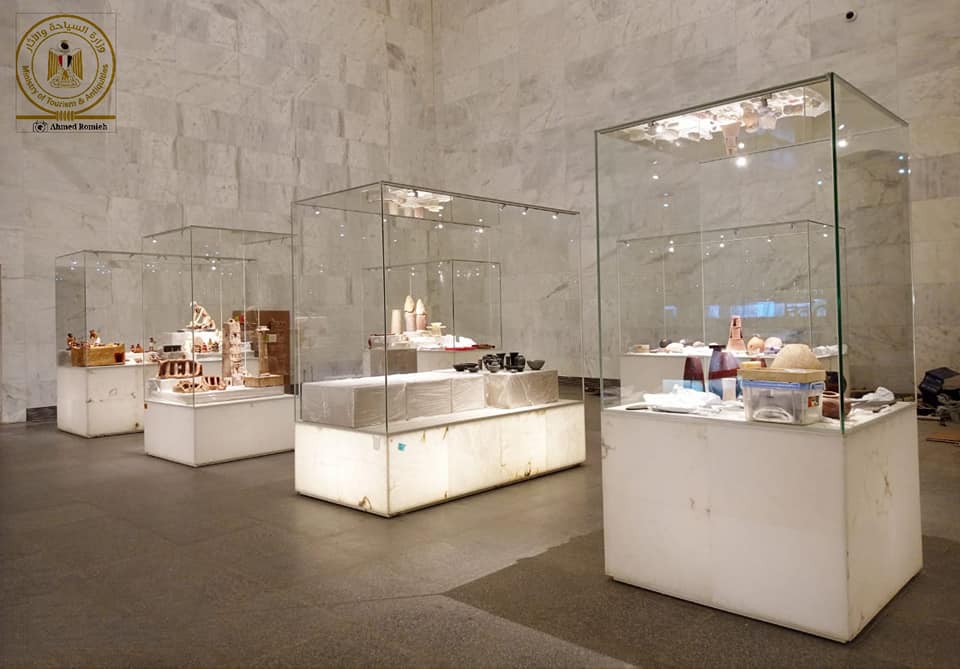
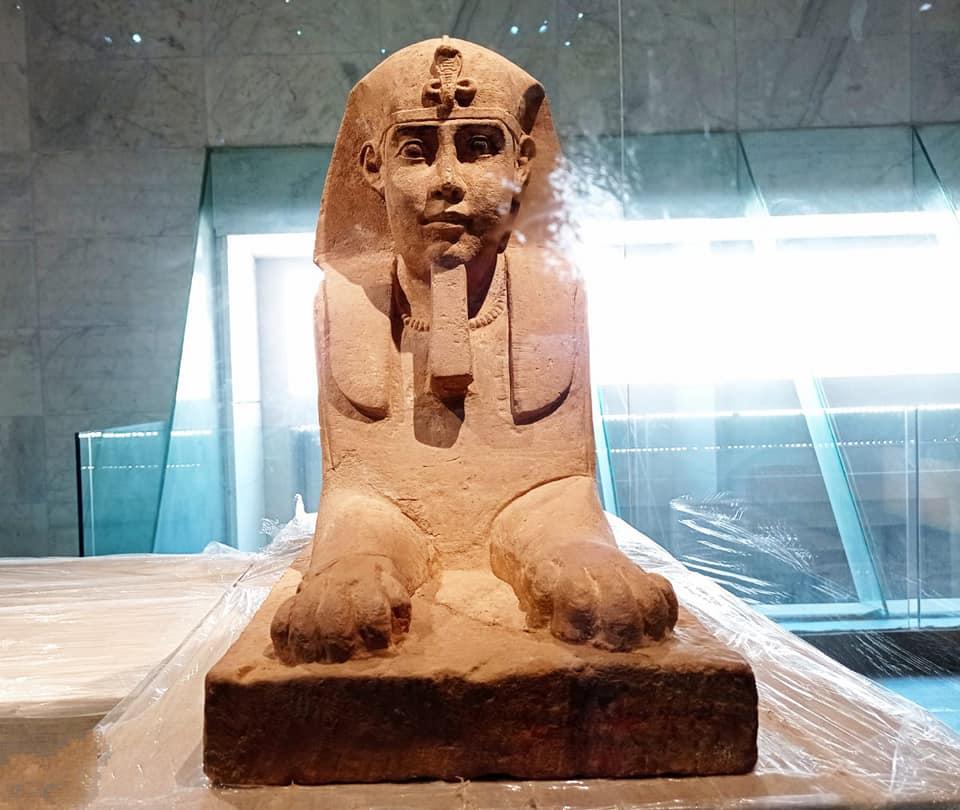
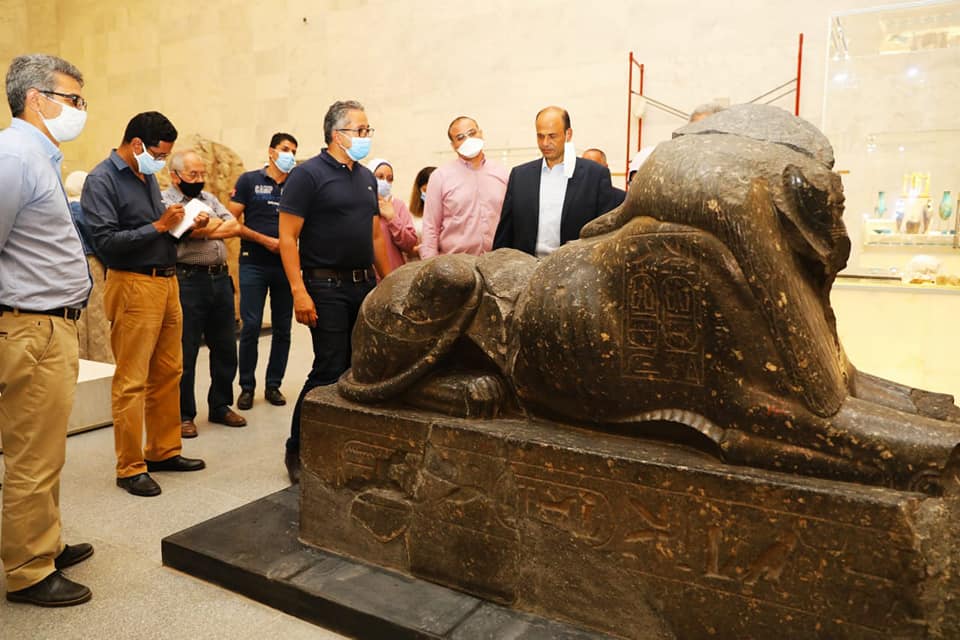
 Sun, Aug. 9, 2020
Sun, Aug. 9, 2020





